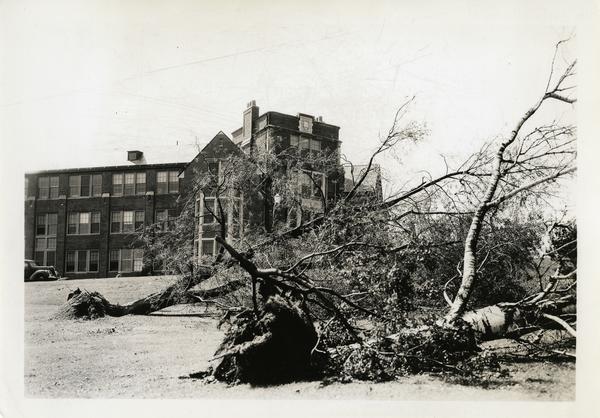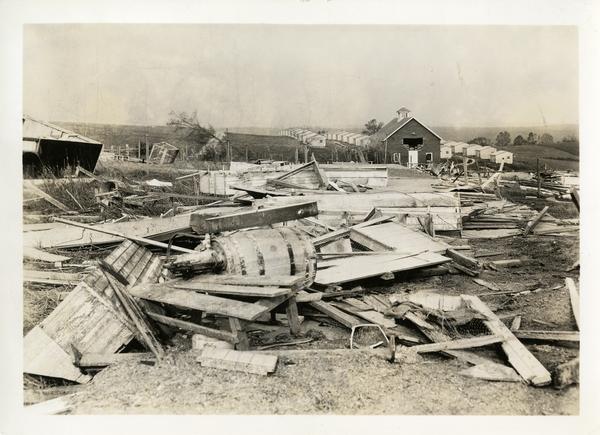
On September 21, 1938, just two days before the start of the fall semester, the Great New England Hurricane hit Connecticut State College. The campus had dealt with natural disasters before, such as the ice storm of 1909, but the damage inflicted by the Hurricane of 1938 was unprecedented. The loss of electricity and the impassability of the roads meant that of immediate concern was the water and food supply for the faculty, staff, and students. The College had to resort to using an emergency water pump and chlorinator to provide safe drinking water, and a battery-powered shortwave radio was the only means of receiving outside news. In the days following the storm, workmen and student volunteers scrambled to clear the damage and repair electric lines. The local telephone company hurried to get a pay station working on campus. Fewer than half of the 668 students registered for the fall semester were on campus at the time of the storm, and there were concerns about the rest making it in before classes started.
In the immediate aftermath of the hurricane, news was spread across campus through the College’s publication, the Connecticut Campus. The Campus published special editions on both September 22 and 23 with the use of a hand-cranked mimeograph machine. It supplied updates on the water and food situation, informing students that although the Dining Hall was stocked with enough supplies, “no pie will be served tonight and no ice cream tomorrow.” The newsletter also shared statements made by President Albert Jorgenson and other College staff regarding campus conditions. The superintendent of the grounds speculated that “it would take about one hundred years for the campus to regain its former beauty.” Mixed in with reports on the state of the roads and estimates for the cost of repairs was a concern for returning to the College’s regular activities. The Campus was uncertain if the upcoming football game between CSC and Brown would be cancelled, although it optimistically reported that planning was underway for a barn dance.

Although most buildings on campus suffered some degree of damage, the grounds and barns experienced the worst effects of the storm. In the weeks following the hurricane, various departments across campus reported their losses to President Jorgenson, including those from Forestry, Poultry, Animal Husbandry, Horticulture, Zoology, and Genetics. Some of the campus’ barns, outbuildings, and fences needed to be completely rebuilt, including the horse barn and two sheep barns. One sheep barn was lifted off its foundation in the storm, and the estimated cost to rebuild totaled $16,000. The poultry department also suffered heavy damages, with piles of rubble all that remained of some chicken houses. Not only was the College’s agricultural activities put on hold by the storm, but its scientific research in genetics and animal diseases was also at an impasse until barns could be repaired and rebuilt. While the College’s horses and cattle survived, over 500 birds sadly perished.
There was a great concern with the damage to the trees on campus, and students were involved in assessing and cleaning up some of the destruction. The Campus bemoaned the loss of the Valentine Grove, where some of the trees destroyed had been over 200 years old. Two students counted 1,762 fallen trees on campus, and others were paid 30¢ an hour to salvage apples from the orchard. Workmen used tractors and teams of horses to pull trees back up, however many could not be saved. The College owned over 900 acres of woodlands, and one report advised that the trees lost should be salvaged if possible and cut into lumber. It was estimated that the labor required to clean up the woodlands would cost $10,400.
Fortunately the academic and student housing buildings suffered relatively minor damages. All buildings with slate roofs needed to be repaired, and some of the fraternity houses reported broken windows, leaking roofs, and damaged chimneys. Despite the hurricane, and as a testament to the hard work of both staff and students, the fall semester began on time. However, it would be many months until the campus could return to the extent of its pre-hurricane operations.
Written by Alexandra Borkowski, a UConn PhD student and student assistant in Archives & Special Collections.
